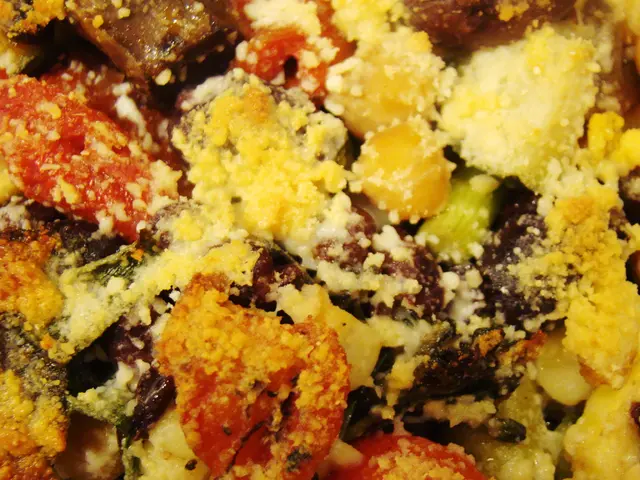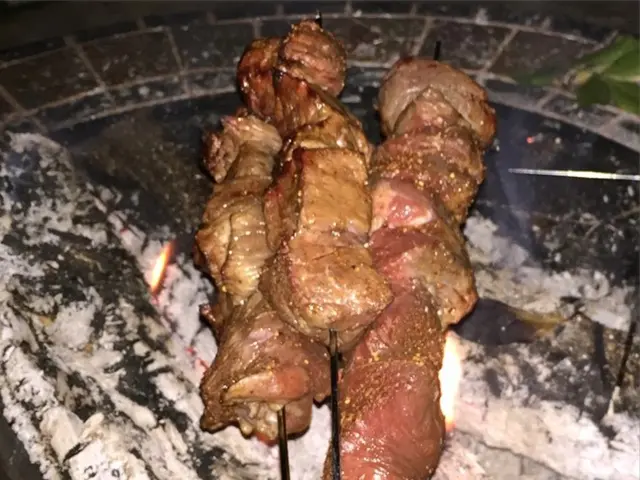Preparing Superior Chamomile Tea: Using Tea Bags or Fresh Flowers as Your Source
Making a Relaxing Cup of Chamomile Tea
Want to unwind after a long day? You're in the right place. This easy-peasy guide will walk you through how to make a steaming hot cup of chamomile tea. We'll also share some tasty tips to elevate the flavors and help ya drift off into dreamland.
But first, some fun facts! Chamomile tea has been a favorite relaxant since antiquity, with records tracing its use back to ancient Egypt. And if you're wondering, chamomile's name comes from the Greek words "kharos" (earth) and "melos" (apple). Isn't that neat?
Let's brew up a pot!
What You'll Need
- 1 tablespoon of dried chamomile flowers
- 8 oz. of water
- Kettle
- Teacup
- Infusion device (teabag or infuser)
(Wanna kick things up a notch? Here are optional flavorings to consider: fresh lemon, honey, or honey-lemon. Just sayin'!)
Brewing Your Tea
Step 1: Get the Water Perfect
importance We know you're eager to savor a warm mug of chamomile tea, but hold your horses! Remember, chamomile is a delicate herb, so it's crucial to make sure the water's not too hot.
Set your kettle to about 200°F (93°C). You don't want to boil the water, as this can ruin the precious flavors of your chamomile. Once the kettle clicks, let it sit for a minute to cool down a bit.
Step 2: Add Your Chamomile
Place 1 tablespoon of dried chamomile flowers into your infusion device or, if you prefer, simply drop a teabag into your teacup.
Step 3: Let it Steep
Tip you should know! Pour your now lukewarm water into the teacup or mug, and swiftly drop in your infusion device containing the chamomile. Gently cover the cup with a saucer and let it steep for about 2 minutes.
Step 4: Remove the Infusion
After your chamomile has had a little soak, carefully remove your infusion device or teabag.
Step 5: Sip and Relax
That's it! Your delightful cup of chamomile tea is ready for you to enjoy. If you like, you can add a few drops of honey or squeeze in some lemon juice for a bit more zing.
Flavoring Your Tea
Now, let's have some fun! Once you've mastered the basics of making chamomile tea, you can explore other tastes that'll tantalize your taste buds and create a unique, savory brew.
With a Honey Twist
For a dash of sweetness, consider adding a small spoonful of honey. Not only will it sweeten things up, but honey also boasts antifungal, antibacterial, and antimicrobial properties[1]. That's a win-win!
Creamy Hint with Milk
If you're not a fan of overly-sweet tea, try adding milk for a hint of creaminess. The mild flavor will add a touch of sweetness without making your tea too sugary. Plus, some people find it aids their sleep.
With a Splash of Fruit
For a healthy alternative to sugar, add slices of fresh apple or a few blueberries to your tea. Or, use fruit juice to give a subtle sweetness to your brew. Just remember to opt for juices without added sugars.
Get creative with your chamomile tea adventures, and find what works best for your palate!
Expert Advice
- Warm your tea cup or mug before brewing to make the tea steep more easily.
- Need a stronger brew? Let your chamomile steep for longer, but beware; the longer it steeps, the stronger it'll taste. Remember, chamomile is a delicate herb, so don't leave it sitting for too long.
- If you're brewing chamomile tea from fresh leaves, the surface area must be increased by chopping them up. Make sure they equal 1 tablespoon of plant material for one 8 oz. cup of tea.
Embrace the power of chamomile tea and let it embrace you back as you unwind and embrace those sweet dreams. Goodnight!
References:[1] ChoodNarayan E, et al. The Use of Phytocomplexes for Sleep Disturbances- New Frontiers. Molecules. 2018;23(12):3196. doi:10.3390/molecules23123196[2] Zick C, Sch Staats C, Scheifele P. Factors associated with the comfort and sensory acceptance of herbal teas: a systematic review and network meta-analysis. Nutrients. 2021;13(7):2205. doi:10.3390/nu13072205[3] Zick C, Scheifele P. Brewing herbal teas – an interdisciplinary review of the ingredients, brewing processes, extraction methods and heritage of this traditional beverage. Flavour. 2016;4(3):32. doi:10.3390/flavours4030032[4] Sattar N, John U, Shujan A, et al. A randomized, double-blind, placebo-controlled crossover trial of CAM therapy versus placebo for the primary prevention of seasonal allergies: results of the Affiliated Manchester National College for Traditional and Complementary Medicine (Manchester, UK) Lung and Airway Research Centre (MAN-LARC) trial. Int J Med Sci. 2011;8(5): 389–396. doi:10.7150/ijms.8.389[5] Korean Medicine. Chamomile Tea. https://www.koreamed.org/search.php?relatedType=&searchClass=&fullText=%22chamomile tea%22&returnResult=&searchWord=chamomile+tea&stitle=EHTML&sgenre=&sjournal=KM&sjjcode=&isc=1&dc_genre=review&dc_type=&dc_serial=&dc_publisher=%C2%A0%C2%A0%C2%A0%C2%A0%C2%A0%C2%A0%C2%A0&dc_year=&dc_month=&dc_day=&bsusername=&searchArea=cmTitle Accessed June 10, 2023.
- A Steaming Hot Cup of Sleep-Inducing Chamomile Tea can aid in improving both physical health and mental health, as it contains calming properties and antibacterial, antifungal, and antimicrobial elements found in honey.
- Making a perfect cup of Chamomile Tea is not only a healthy lifestyle choice but also a fun experience for food-and-drink enthusiasts who enjoy experimenting with different flavorings such as lemon, honey, or honey-lemon.
- Chamomile tea is not just a sleep aid; it also embodies the principles of health-and-wellness and mental-health by promoting relaxation, reducing stress, and improving overall well-being.
- Brewing a pot of Chamomile Tea should be part of your evening cooking routine in a nurturing space, promoting a mindful lifestyle as you embrace the healing benefits of this ancient ancient remedy.








